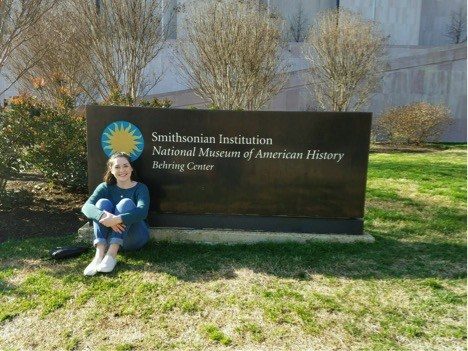
One of the things I love most about museums is the way they make history come alive—that’s why I applied to be an intern at the National Museum of American History. I wanted to experience firsthand the work that goes into creating a space for lovers of history to explore and enjoy different epochs in time. So many emotions ran through me when I got the call offering me a position in the intern cohort of spring 2016: As a history major, I was excited to work in a building that housed artifacts from my favorite historical eras and figures, and I was proud to help the Smithsonian Institution provide an accessible history education to patrons from around the world.
The more time I spent at Smithsonian, the more I loved museum education. Not only did I witness students enjoying the exhibits, but I was able to work on a project that would bring history into science classes. I conducted research at the Smithsonian’s Dibner Library and assisted in the writing of short biographies of prominent scientific figures and their inventions to help a fantastic team of museum educators launch an interactive STEM program for students. It’s wonderful to know that students and teachers that use the program will benefit from the work I contributed in their science classes.
I was sad when my Smithsonian internship came to an end, but I was determined to do something with my summer vacation that would gain me more experience in public history. I returned home to New Jersey in the summer, where I became a docent tour guide at Fosterfields Living Historical Farm and a camp counselor in their Travels in Time summer camp. I gave school groups tours of a dairy farm in Morristown, New Jersey and assisted students in cooking historic recipes on an open hearth. I enjoyed wearing period clothing while students bopped around the farm, excitedly performing the tasks of an early-twentieth century farmhand and boisterously asking me questions about the life of a farmer. The students’ interest in their local history only enhanced my own passion for the field. I loved knowing that the information I provided contributed to their growing love of history.
As an intern at the Department of Education this past fall, I was able to see how museum education programs can benefit classroom teachers and students. Local and national histories are not only interesting stories, but they supplement social studies curriculum implemented in elementary and secondary schools across the country. My experience in public history has shown me the benefits of museum education, and it was refreshing to see employees of the federal government reflect this sentiment. It’s important to provide students an opportunity to engage with national and local histories. I never thought students would be excited about staring at Dorothy’s slippers from The Wizard of Oz at the National Museum of American History, or learning how to crack corn on a living historical farm in rural New Jersey—until I witnessed it myself. Students love a tangible history education; they realize history can be fun, and when given the chance, museums can provide the tools to extend learning outside the classroom.
The fields of museum education and public history have provided me with some of the most rewarding internship experiences I could have ever wished for. Not only did I get to spend my time with fellow lovers of history, but I was able to impact the history education of students across the country. If you’re thinking about a museum internship—whether at a small, local organization or a larger institution like the Smithsonian—don’t hesitate to apply. Museums are an invaluable historical resource, one that benefits from the tireless work of passionate employees, volunteers and interns dedicated to providing accessible educational programs to students and patrons alike. Interns receive an impactful education as well. They learn the behind-the-scenes work of running a museum, and they can pride themselves knowing that their work really does contribute greatly to the field of public history.
Emily Surman is an undergraduate junior at the American University in Washington, D.C. She studies history and secondary education in the university’s College of Arts and Sciences. To contact, please email es1307b@student.american.edu.







